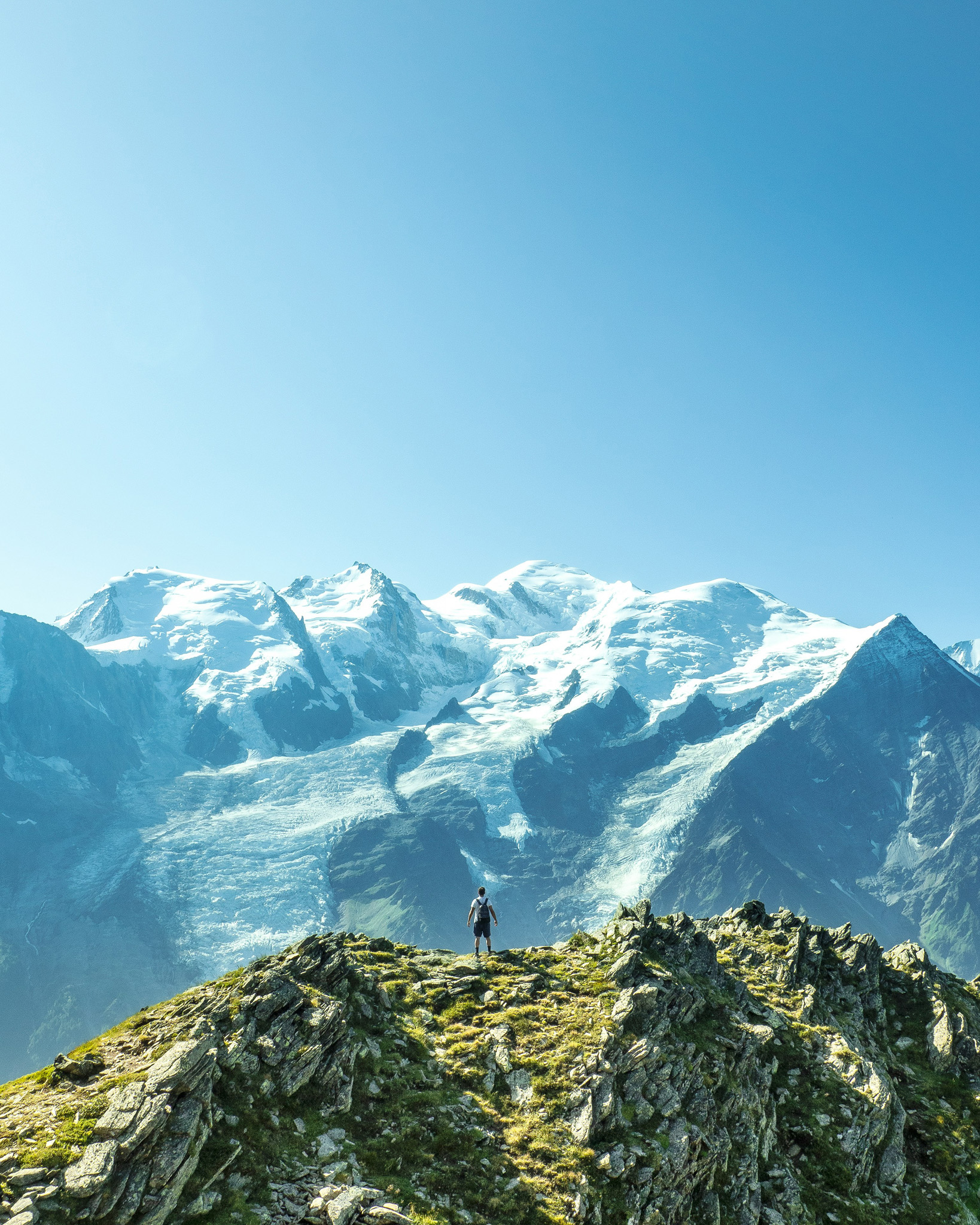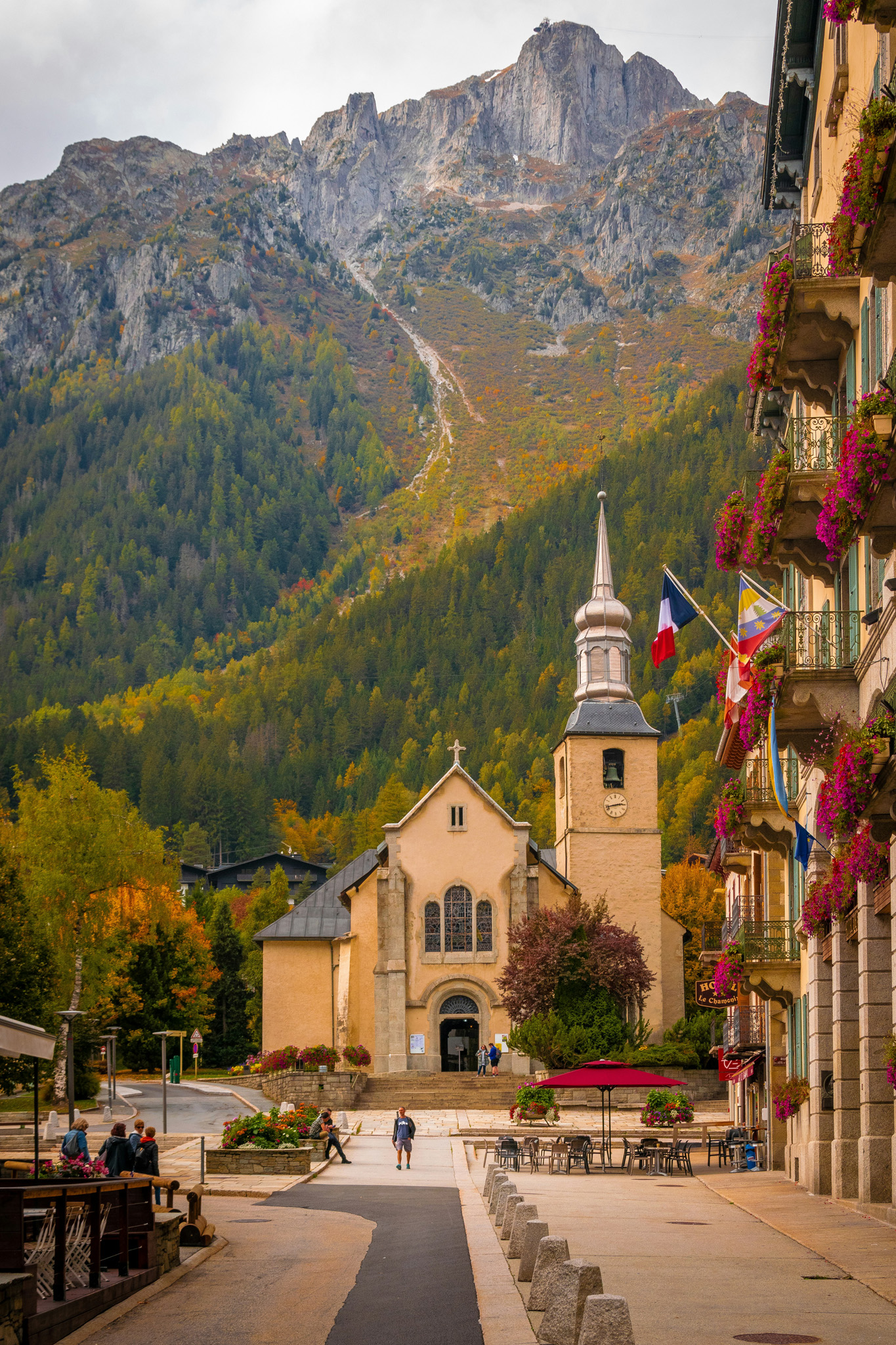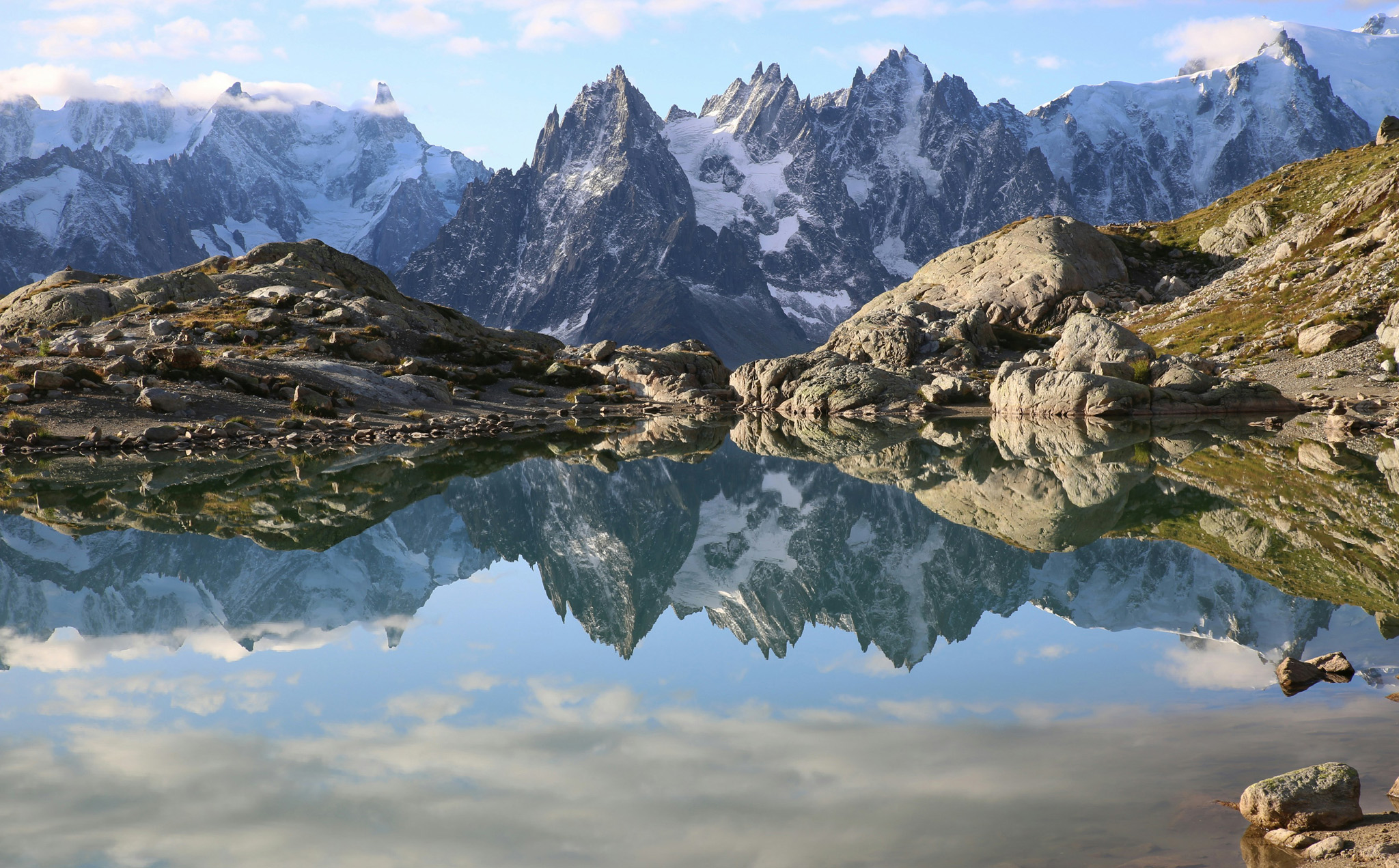Mont Blanc – Destination Guide
Mont Blanc, towering at 4,809 meters (15,777 feet), is the highest peak in Western Europe and one of the most iconic destinations in the Alps. Straddling the borders of France, Italy, and Switzerland, it offers breathtaking landscapes, world-class hiking, mountaineering, and skiing, and charming alpine villages rich in history and culture. Whether trekking the legendary Tour du Mont Blanc (TMB), skiing in Chamonix, or simply taking in the panoramic views, Mont Blanc is a must-visit for adventure lovers and nature enthusiasts alike.

Key Highlights
- Tour du Mont Blanc – One of the world’s most famous multi-day treks, circling the Mont Blanc massif through France, Italy, and Switzerland.
- Aiguille du Midi – A breathtaking cable car ride to 3,842 meters, offering unmatched views of Mont Blanc and the surrounding peaks.
- Mer de Glace – France’s largest glacier, accessible via the scenic Montenvers Railway from Chamonix.
- Chamonix-Mont-Blanc – A historic alpine town and the ultimate base for hiking, skiing, and mountaineering.
- Courmayeur, Italy – A charming mountain town with stunning views, a relaxing thermal spa, and incredible Italian cuisine.
- Grand Col Ferret – A dramatic mountain pass on the Tour du Mont Blanc, offering breathtaking views as you enter Switzerland.
- Skiing & Snowboarding – Legendary slopes in Chamonix and Courmayeur, with options for all skill levels.
Closest Major Towns
- Chamonix, France – The most popular base for Mont Blanc adventures, known for its mountaineering history, lively outdoor culture, and stunning scenery.
- Courmayeur, Italy – A picturesque alpine town offering excellent skiing, thermal spas, and views of Mont Blanc’s southern face.
- Martigny, Switzerland – A gateway to the Swiss Alps, known for vineyards, museums, and access to the Tour du Mont Blanc.
Arrival Airports & Transportation
- Geneva Airport (GVA), Switzerland – The closest major airport, just a 1-hour drive to Chamonix, with frequent shuttles and transfers available.
- Lyon-Saint Exupéry Airport (LYS), France – A 2.5-hour drive to Chamonix, offering international connections and train access.
- Turin Airport (TRN), Italy – A great option for starting in Courmayeur, about 1.5 hours away by car.
- Train & Bus Access – Chamonix is accessible by train via SNCF connections from France, while bus routes connect to Geneva and Italian cities.

Best Time to Visit
- Peak Summer (June – September): The best time for hiking and trekking, with warm temperatures, clear trails, and wildflowers. Expect crowds on popular routes.
- Shoulder Season (May & October): Fewer crowds, but some high-altitude trails may be closed due to snow. Great for lower-altitude hikes and sightseeing.
- Peak Winter (December – March): Prime ski season, especially in Chamonix and Courmayeur. Expect busy slopes and higher accommodation prices.
- Off-Peak (April & November): Quietest months, with limited activities. Some cable cars, trails, and mountain huts may be closed.

Practical Information
Currency & Payments
- France & Italy: Euro (€)
- Switzerland: Swiss Franc (CHF) (Euros are sometimes accepted, but exchange rates are unfavorable.)
- Credit Cards: Widely accepted in towns, hotels, and restaurants, but some mountain huts, small shops, and rural areas may only take cash.
- ATMs: Available in larger towns like Chamonix, Courmayeur, and Martigny, but limited in remote areas. It’s best to carry some local currency for small purchases, tips, and mountain refuges.
Languages Spoken
- France: French
- Italy: Italian
- Switzerland: French (in western regions), German (in other parts)
- English is widely spoken in tourist areas, especially in Chamonix and Courmayeur.
Visa & Entry Requirements
Mont Blanc treks can pass through France, Italy, and Switzerland – which means you’ll likely need a Schengen Visa unless you’re from a visa-exempt country. All three countries are part of the Schengen Area, so one visa covers the entire route.
Here are the official visa portals for each country:
-
France: https://france-visas.gouv.fr
-
Switzerland: https://www.sem.admin.ch/sem/en/home.html
Apply through the country where you’ll enter the Schengen Zone or spend the most time.
While hiking, you’ll cross borders multiple times, but there are no official checkpoints on the Tour du Mont Blanc. Carry your passport just in case.

Food & Dining
- French Alps: Cheese-heavy dishes like fondue, raclette, and tartiflette (potato, bacon, and cheese gratin).
- Italian Alps: Pasta, polenta, and local Valdostana cuisine, plus amazing espresso.
- Swiss Alps: Classic Swiss fondue, rösti (crispy potato dish), and hearty alpine meals.
- Trail Food: Expect picnic-style lunches on hikes, with fresh bread, cheese, meats, and fruit. Refuges offer warm meals in the evenings.
Tipping Guide
We recommend tipping $4 USD per traveler, per day for your trekking crew (assistant guides and porters), to be shared at the end of the trek. For additional crew such as local guides, drivers, or cooks, tip $2–4 USD per person, per day.
Please avoid giving coins, very small denominations, or damaged notes, as these may be considered disrespectful.
eSIM & Connectivity
- Mont Blanc spans three countries, so a regional eSIM covering France, Italy, and Switzerland is ideal. Using an eSIM is our recommended choice while travelling anywhere in the world, and our recommended provider is Holafly. For more information on eSIMs, check out this blog.
- WiFi is widely available in towns and most mountain refuges, but remote areas may have limited signal.
- Local SIMs: If using a physical SIM, Orange (France), TIM (Italy), and Swisscom (Switzerland) offer good coverage.
Packing List
Clothing
- Base Layers – Moisture-wicking tops and thermal leggings (2–3 sets)
- Insulating Layer – Fleece or lightweight down jacket
- Waterproof Jacket – Breathable and fully waterproof
- Waterproof Pants – Lightweight and packable
- Trekking Pants – Quick-dry, lightweight (2–3 pairs)
- Shorts – Optional for warmer days
- T-shirts – Moisture-wicking (2–3)
- Warm Hat – Beanie or wool hat
- Cap or Sun Hat – For sun protection
- Gloves – Lightweight gloves plus waterproof/windproof pair
- Buff or Neck Gaiter – For warmth and dust/sun protection
- Socks – Wool or technical hiking socks (3–4 pairs)
- Underwear – Quick-dry (3–4 pairs)
- Sleepwear – Comfortable clothing for refuge stays
Footwear
- Hiking Boots – Well-broken-in, waterproof with good ankle support
- Camp Shoes – Lightweight (e.g., sandals or slides)
- Gaiters – Optional, useful in wet or muddy conditions
Gear & Equipment
- Daypack (20–30L) – With chest and waist straps
- Backpack (if not using luggage transfer) – 40–50L
- Rain Cover – For your backpack
- Trekking Poles – Adjustable, with rubber tips
- Headlamp – Plus spare batteries
- Water Bottles or Hydration Bladder – At least 2L total capacity
- Sleeping Bag Liner – Required in most mountain refuges
- Quick-Dry Towel – Small travel towel
- Dry Bags or Ziplock Bags – To protect electronics and clothes
- Reusable Bag – For laundry or separating dirty clothes
Toiletries & Health
- Sunscreen – SPF 30 or higher
- Lip Balm – With SPF
- Toothbrush & Toothpaste
- Biodegradable Soap/Shampoo
- Wet Wipes – For when showers aren’t available
- Hand Sanitiser
- Personal Medications
- Blister Kit – Compeed, moleskin, or blister tape
- Basic First Aid Kit – Band-aids, painkillers, antiseptic
- Toilet Paper or Tissues – Always handy
- Pee Funnel
- Feminine Hygiene Products
Documents & Essentials
- Passport – Required if crossing borders
- Travel Insurance Details
- Cash in Euros & Swiss Francs – Some huts may not accept cards
- Credit/Debit Card – For towns along the way
- Guidebook or Map – Optional but helpful
- Phone & Charger
- Power Bank – For charging devices on the go
- Earplugs – Shared rooms can be noisy
- Notebook or Journal – Optional, but a great way to remember the experience
Why Visit Mont Blanc?
Mont Blanc offers a rare blend of adventure, stunning landscapes, and cultural charm. Whether you’re summiting peaks, trekking through wildflower-strewn valleys, or indulging in French, Italian, and Swiss mountain cuisine, this alpine wonderland promises an experience unlike any other. With quieter trails, breathtaking scenery, and expert guidance, your Mont Blanc adventure awaits!


